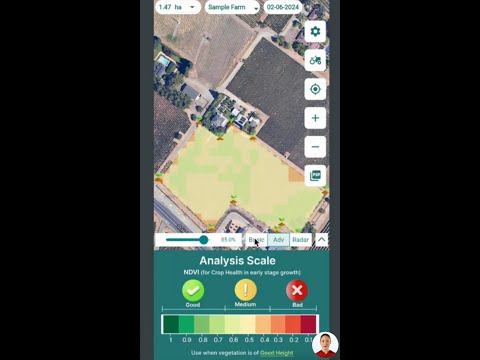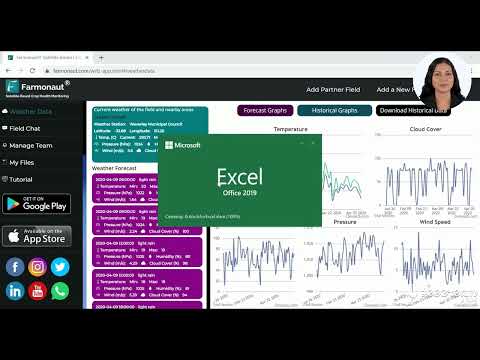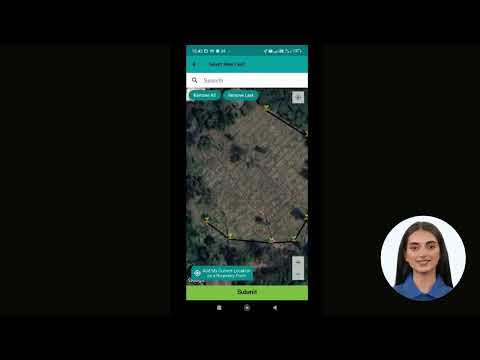Harlingen Residents: Complete iSTAT Survey for Texas Weather Damage Assessment and Disaster Assistance
“The iSTAT survey, available in two languages, helps assess damage to three key areas: homes, businesses, and agriculture.”
We, as residents of Harlingen, Texas, have recently faced significant challenges due to severe weather events. The impact of these storms has left many of us grappling with damage to our homes, businesses, and agricultural lands. In response to this crisis, we’re calling on all affected community members to participate in a crucial initiative: the Individual State of Texas Assessment Tool (iSTAT) survey. This comprehensive damage assessment tool is vital for our city’s recovery and potential access to disaster assistance.
Understanding the iSTAT Survey and Its Importance
The iSTAT survey is a state-of-the-art tool designed to help emergency management officials evaluate the extent of damage caused by natural disasters, particularly the recent rainstorm that has affected our Harlingen community. By completing this survey, we contribute to a broader understanding of the impact on our city, which is crucial for several reasons:
- Accurate Assessment: It provides a detailed picture of the damage across homes, businesses, and agricultural areas.
- Resource Allocation: Helps determine immediate community resources needed for recovery.
- Federal Assistance Eligibility: Plays a key role in evaluating if our state meets federal requirements for disaster assistance.
It’s important to note that while the survey is voluntary and doesn’t guarantee disaster relief assistance, it’s a critical step in the process of securing help for our community.

Step-by-Step Guide to Completing the iSTAT Survey
To ensure that all Harlingen residents can easily participate in this crucial weather damage survey, we’ve prepared a comprehensive guide to walk you through the process:
| Step | Action | Details/Tips |
|---|---|---|
| 1 | Accessing the Survey | Visit the official iSTAT website or use the link provided by local authorities |
| 2 | Language Selection | Choose between English or Spanish versions of the survey |
| 3 | Damage Documentation | Gather photos and notes on observed damage before starting |
| 4 | Property Information | Provide accurate details about your property location and type |
| 5 | Impact Assessment | Describe the extent and nature of damage in detail |
| 6 | Additional Resources | Access tutorial videos for guidance on survey completion |
| 7 | Submission | Review all information and submit the completed survey |
Remember, the more detailed and accurate our responses, the better equipped our emergency management officials will be to assess and address the needs of our community.
The Role of Technology in Disaster Assessment and Management
In today’s digital age, technology plays a crucial role in disaster assessment and management. The iSTAT survey is just one example of how digital tools can streamline the process of gathering critical information in the aftermath of a disaster. Similarly, in the agricultural sector, advanced technologies are being employed to monitor and manage farms, especially in times of crisis.
For instance, satellite-based crop monitoring systems can provide valuable insights into the extent of damage caused by severe weather events. These systems use multispectral imagery to assess crop health and soil conditions, which can be particularly useful in quantifying agricultural losses after a disaster.
As we navigate through this challenging time, it’s worth exploring how such technologies can aid in our recovery and future preparedness. For example, Farmonaut’s crop monitoring services could be valuable for our local farmers in assessing and documenting agricultural damage for insurance claims or disaster relief applications.
Community Resilience and Collaborative Efforts
“Harlingen’s participation in this weather damage survey could impact both local resource allocation and federal disaster assistance eligibility.”
Our response to this disaster is a testament to the resilience of the Harlingen community. By coming together to complete the iSTAT survey, we’re not just documenting damage; we’re actively participating in our city’s recovery process. This collaborative effort showcases the strength of our community spirit and our commitment to rebuilding together.
As we work through this process, it’s important to remember that the iSTAT survey is just one part of a larger recovery effort. We encourage all residents to:
- Stay informed through official city channels and local news outlets
- Reach out to neighbors who might need assistance in completing the survey
- Document all damage thoroughly, not just for the survey but also for insurance purposes
- Engage with local support groups and community organizations involved in the recovery effort

Leveraging Technology for Future Preparedness
While we focus on immediate recovery, it’s also crucial to consider how we can better prepare for future weather events. Advanced technologies can play a significant role in this preparedness. For instance, fleet management systems can be invaluable for coordinating emergency response vehicles and resources during disasters.
Additionally, weather forecasting and early warning systems have become increasingly sophisticated. By integrating these technologies into our city’s emergency management plan, we can improve our ability to predict and prepare for severe weather events.
For our agricultural community, tools like Farmonaut’s satellite-based crop monitoring can provide early indicators of potential issues, allowing farmers to take preventive measures before a disaster strikes. This proactive approach can significantly reduce the impact of severe weather on our local agriculture.
The Importance of Accurate Documentation
As we complete the iSTAT survey, it’s crucial to understand the importance of accurate documentation. This process goes beyond just filling out a form; it’s about creating a comprehensive record of the disaster’s impact on our community. Here are some key points to keep in mind:
- Detailed Descriptions: Provide thorough descriptions of all damage observed.
- Visual Evidence: Include clear photographs of damage where possible.
- Timely Reporting: Complete the survey as soon as it’s safe to assess the damage.
- Consistency: Ensure that the information provided aligns with any insurance claims you may file.
Remember, while the iSTAT survey is crucial for community-level assessment, it doesn’t replace the need to file individual insurance claims. Always document damage for your personal records and insurance purposes in addition to completing the survey.
Utilizing Advanced Tools for Accurate Assessment
In the realm of agricultural damage assessment, advanced tools can provide invaluable insights. For instance, satellite-based crop monitoring services offer a comprehensive view of agricultural lands, helping to quantify the extent of damage across large areas. This technology can be particularly useful for:
- Assessing crop health before and after the disaster
- Identifying areas of severe impact that may not be immediately visible from the ground
- Providing data to support insurance claims and disaster relief applications
While these tools are not a replacement for the iSTAT survey, they can complement the data collected, providing a more comprehensive picture of the disaster’s impact on our agricultural sector.
Community Support and Resources
As we navigate through this challenging time, it’s important to remember that we’re not alone in this process. Our community has rallied together to provide support and resources for those affected by the recent weather events. Here are some key resources available to Harlingen residents:
- Local Emergency Services: For immediate assistance and safety concerns
- Community Centers: Offering temporary shelter and basic necessities
- Mental Health Support: Counseling services for those dealing with stress and anxiety
- Legal Aid: Assistance with insurance claims and disaster relief applications
- Volunteer Organizations: Coordinating cleanup efforts and community support
We encourage all residents to reach out and utilize these resources as needed. Remember, seeking help is a sign of strength, not weakness, and our community is here to support one another through this recovery process.
Looking Ahead: Building a More Resilient Harlingen
As we work through the immediate aftermath of this disaster, it’s also important to look ahead and consider how we can build a more resilient Harlingen. This experience has highlighted the importance of preparedness and the need for robust systems to manage and mitigate the impact of severe weather events.
Some areas we might focus on for future preparedness include:
- Improved early warning systems
- Enhanced infrastructure to better withstand severe weather
- Community education programs on disaster preparedness
- Integration of advanced technologies for monitoring and response
By learning from this experience and implementing these improvements, we can work towards a future where our community is better equipped to face whatever challenges may come our way.
The Role of Data in Disaster Management
The iSTAT survey is a prime example of how data collection and analysis play a crucial role in disaster management. By gathering detailed information about the impact of the disaster, we enable our emergency management officials to make informed decisions about resource allocation and recovery strategies.
Similarly, in the agricultural sector, data-driven approaches are becoming increasingly important. Large-scale farm management tools that utilize satellite imagery and AI can provide valuable insights into crop health and soil conditions, which can be particularly useful in assessing and mitigating the impact of disasters on our agricultural lands.
As we move forward, embracing these data-driven approaches can help us not only in recovery but also in building more resilient systems for the future.
Frequently Asked Questions
To address some common concerns and queries about the iSTAT survey and disaster assistance process, we’ve compiled a list of frequently asked questions:
- Q: Is the iSTAT survey mandatory?
A: No, the survey is voluntary, but it’s highly encouraged as it helps in assessing the overall impact on our community. - Q: Will completing the survey guarantee disaster assistance?
A: While the survey doesn’t guarantee assistance, it’s a crucial step in determining eligibility for state and federal aid. - Q: How long does it take to complete the survey?
A: The time varies depending on the extent of damage, but it typically takes 15-30 minutes. - Q: Can I complete the survey on behalf of a neighbor or family member?
A: Yes, you can help others complete the survey, but ensure you have accurate information about their property and the damage incurred. - Q: What if I don’t have internet access to complete the online survey?
A: Contact local authorities or community centers for assistance in completing the survey.
Conclusion: Our Path Forward
As we conclude this comprehensive guide to the Harlingen disaster assistance survey and recovery efforts, let’s remember that our strength lies in our unity as a community. By participating in the iSTAT survey, we’re not just documenting damage; we’re taking an active role in shaping our city’s recovery and future resilience.
We encourage all affected residents to complete the survey promptly and accurately. Your participation is crucial in ensuring that our community receives the support and resources it needs to rebuild and thrive. Together, we can overcome this challenge and emerge stronger, more prepared, and more united than ever before.
Let’s stand together, Harlingen, and take this important step towards recovery and resilience. Our collective efforts today will pave the way for a stronger, more prepared community tomorrow.
Earn With Farmonaut: Affiliate Program
Earn 20% recurring commission with Farmonaut’s affiliate program by sharing your promo code and helping farmers save 10%. Onboard 10 Elite farmers monthly to earn a minimum of $148,000 annually—start now and grow your income!







